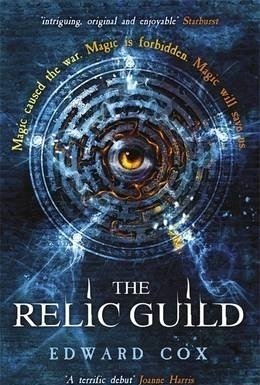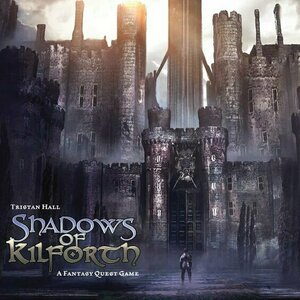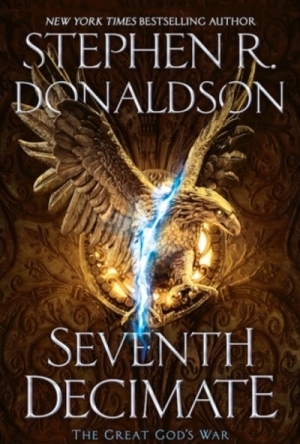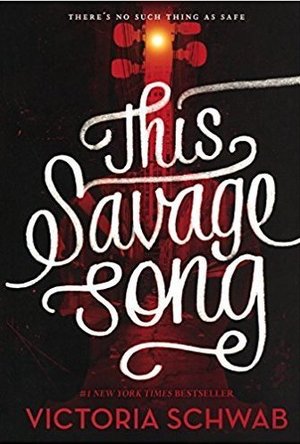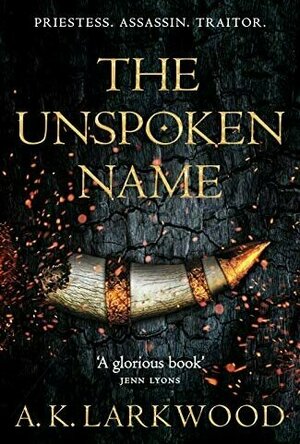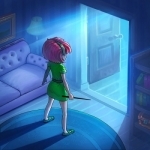
Ghost Town: Mystery Match Game
Games and Stickers
App
Epic journey leads you in abandoned township to help the cute local characters. Exciting plot about...
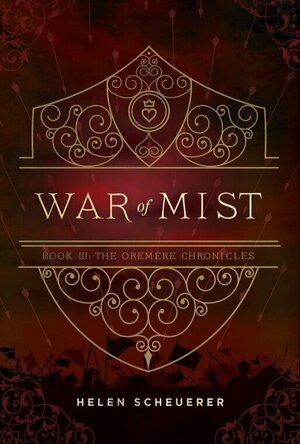
War of Mist (The Oremere Chronicles #3)
Book
War is here. Toxic mist drives all life to the brink of destruction and the conqueror queen, Ines,...
Hazel (1853 KP) rated The Relic Guild in Books
May 30, 2017
Edward Cox invents a new magical world in his epic fantasy novel The Relic Guild. Magic is a thing of the past. Since a great war forty years previously, magic has been banned. Back in the day the Relic Guild was made up of people with various magical abilities – empaths, illusionists, changelings – but a great war got rid of all those with magic, all but three that is. Marney, Samuel and Van Bam are the only surviving agents of the Relic Guild. In their old age they have not needed to use their abilities that much until evidence that a particular infamous Genii, Fabian Moor, did not perish as he was thought to have done. Moor kidnaps Marney leaving Old Man Sam and Van Bam to hunt him down with the help of a young changeling, Peppercorn Clara, who, until now, had been hiding her illegal magical gift.
It took a long time to get into the novel and understand what was going on. It was confusing as to who was good and who was bad at the very beginning, which did not help in understanding the events occurring. Approximately half way through the pace picked up and became a lot more exciting and easier to engage with. It helped that the narrative alternated between the present and forty years earlier. By providing an insight into history of the Relic Guild the current situation began to make more sense.
Oddly the book begins with an epilogue. Initially I wondered whether that was intentional – maybe parts of the story were to be told backwards – however, on finishing the final chapter it appears that, perhaps, it was an error. There were also a few other mistakes that were obviously missed during the proof readings.
The ending of the story strongly implies that there is more to come. This felt a little annoying as there was no conclusion to, what felt like, an extremely long and slow starting book. I am undecided whether I would want to read a sequel; whilst it would be nice to find out how the situation is resolved, it was not the easiest of books to read. It was also difficult to visualize the setting, particularly the constant reference to a labyrinth.
Overall it was a bit of a disappointment. The blurb set it up to be a really gripping storyline but in reality it was confusing and hard going.
Hazel (1853 KP) rated The Relic Guild in Books
Dec 14, 2018
Edward Cox invents a new magical world in his epic fantasy novel <i>The Relic Guild</i>. Magic is a thing of the past. Since a great war forty years previously, magic has been banned. Back in the day the Relic Guild was made up of people with various magical abilities – empaths, illusionists, changelings – but a great war got rid of all those with magic, all but three that is. Marney, Samuel and Van Bam are the only surviving agents of the Relic Guild. In their old age they have not needed to use their abilities that much until evidence that a particular infamous Genii, Fabian Moor, did not perish as he was thought to have done. Moor kidnaps Marney leaving Old Man Sam and Van Bam to hunt him down with the help of a young changeling, Peppercorn Clara, who, until now, had been hiding her illegal magical gift.
It took a long time to get into the novel and understand what was going on. It was confusing as to who was good and who was bad at the very beginning, which did not help in understanding the events occurring. Approximately half way through the pace picked up and became a lot more exciting and easier to engage with. It helped that the narrative alternated between the present and forty years earlier. By providing an insight into history of the Relic Guild the current situation began to make more sense.
Oddly the book begins with an epilogue. Initially I wondered whether that was intentional – maybe parts of the story were to be told backwards – however, on finishing the final chapter it appears that, perhaps, it was an error. There were also a few other mistakes that were obviously missed during the proof readings.
The ending of the story strongly implies that there is more to come. This felt a little annoying as there was no conclusion to, what felt like, an extremely long and slow starting book. I am undecided whether I would want to read a sequel; whilst it would be nice to find out how the situation is resolved, it was not the easiest of books to read. It was also difficult to visualize the setting, particularly the constant reference to a labyrinth.
Overall it was a bit of a disappointment. The blurb set it up to be a really gripping storyline but in reality it was confusing and hard going.
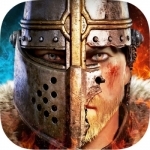
King of Avalon: Dragon Warfare
Games and Social Networking
App
Make friends and battle enemies across the globe, your dragon and throne await! Get your armor on,...
Purple Phoenix Games (2266 KP) rated Shadows of Kilforth: A Fantasy Quest Game in Tabletop Games
Sep 3, 2020
Shadows of Kilforth is subtitled, “A Fantasy Quest Game.” Right there in the title you find out exactly what you are up against in the very foreboding but unassumingly-sized box. A game set in a fantasy world that is focused on questing. I have to admit up front that this review will be treated a little differently as the rulebook is hefty and nobody wants to read a thorough rules essay on Shadows. So I will give you a very high-level overview of the main steps and then give you my thoughts on how it all works together.
DISCLAIMER: We were provided a copy of this game for the purposes of this review. This is a retail copy of the game, so what you see in these photos is exactly what would be received in your box. I do not intend to cover every single rule included in the rulebook, but will describe the overall game flow and major rule set so that our readers may get a sense of how the game plays. For more in depth rules, you may purchase a copy online or from your FLGS. -T
Shadows of Kilforth is essentially a card and dice RPG-esque adventure game with an Asian-style theme but set in a fantasy world where locations will be devastated into gloom (building upon the first in the series Gloom of Kilforth). The players, as the heroes, have the daunting task of journeying throughout Kilforth’s 25 locations to collect items, allies, spells, and titles to overcome main quests and subquests before every location falls into gloom. These quests usually have the players gathering specific card types to satisfy and complete. Once main player storyline quests, called Sagas, are completed the hero levels up and when they complete their fourth quest in their main Saga they may attempt their Finale and then may finally assault the big boss, the Ancient.
Each turn players have Action Points (AP) to spend on doing different actions: movement, discovering rumours (yes, I know it’s the Queen’s English), confrontations, and regaling a Saga chapter, among several others. Some actions are free actions, called Deeds. These include resolving loot tokens, assaulting an ancient, exchanging items between players, and several others. By using combinations of Actions and Deeds players will be able to travel around collecting those items, allies, and so forth needed to complete their Saga chapters.
To complete objectives and quests, players will typically be rolling dice to meet requirements on the cards. This, as all role-players know, can be either supremely lucky or incredibly and predictably debilitating. Skill checks are abundant in Shadows and diversifying characters may or may not have advantages by being able to complete Fight, Study, Sneak, and Influence tests. Players will win if they can complete their Sagas and defeat the Ancient before all of the locations fall into gloom, signaling the end of the game.
All this, again, is very high-level and there are many intricacies in Shadows that I just cannot go over for the sake of time and the health of my typing fingers. But, the game can be played solo, cooperatively, or competitively. So depending on the mode of play and number of players Shadows can range from a 45 minute foray to multi-hour epics. This is why I have played this solo with one character for my plays.
Components. Shadows of Kilforth is very card-heavy, but also includes other goodies. The cards themselves are firstly quite numerous, but also good quality. I can see myself sleeving this and loving every minute of that process. Aside from the cards, the game includes standees for player pieces on the card map, wooden components to track HP, AP, Fate, Obstacles, Gold, Hidden characters, great swirly 6d6, and also cardboard chits for Loot tokens. I haven’t even mentioned the art yet and that may be the most stunning component in this game! I LOVE a game with great art, and Shadows has simply amazing art. This is not usually my style of game art either, but it is so pleasing and everything makes sense and gets me immersed in the game. Everything provided is wonderful quality and an absolute joy to use during play.
Ok so like always, we place our ratings graphic right at the top of our posts so our readers can see right away what we think of the game. As you can tell, I love Shadows of Kilforth. It has essences of so many games I enjoy pieced together in a very attractive and captivating package. The movement and subsequent destruction of map-cards are reminiscent of Forbidden Island/Desert and Tiny Epic Defenders, which I really love (don’t hate – it’s a good game). The gathering of select card types and returning to a location to complete feels like fetch quests in MMORPGs (Final Fantasy XI being my main squeeze for many years). Obviously dice skill checks and level ups from tabletop RPGs are in there as well.
Shadows is just such a great collection of mechanics that I love that I can see myself playing this game over and over and over. Caveat: I will never play this any way other than absolutely solo. My first play, yes a learning session, was just shy of two hours from setup to tear-down. Adding players will increase game length, and playing with AP-prone friends is a no-go for me on Shadows; I had to reference both the excellent provided cheat sheet and the rulebook throughout the play but I eventually got the hang of it and was able to fly through. I may play this solo but with multiple characters cooperatively someday, but I do not wish to play this with other people. Ever.
So here’s my final thought. Shadow of Kilforth is a beefy game, but is well worth the time and effort to learn and play a couple times before passing judgment. It has everything I love in a game and I can’t stop thinking about it. I want to play all the different Race/Class combinations and just dunk on all the Ancients. If only my dice didn’t hate me so much. I will certainly be keeping this one forever, and if you are a fan of fantasy themed adventure card games with heavy use of dice and cool components, DEFINITELY take a look at Shadows of Kilforth. As I am the only one who has played this, I speak for the team in saying Purple Phoenix Games gives this one a 6 / 6. Treat yoself to this one, folks.
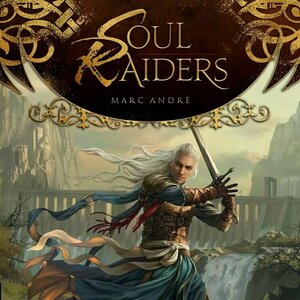
Soul Raiders
Tabletop Game
Tomorrow is the day: you will pledge yourself to the ancestral order of the Soul Raiders, in the...
Ross (3284 KP) rated The Seventh Decimate : The Great Gods War Book One in Books
Jan 22, 2018
I haven't previously read any of Donaldson's work, though my Dad's unwieldy omnibus edition of the First Chronicles of Thomas Covenant the Unbeliever has been in my pile for some time now.
The storyline follows Prince Bifalt journeying to find the sorcery that can undo his country's current plight (they appear to have lost all magical abilities, key to staying in their generations old battle with neighbours). It starts off in the moments before battle, with the prince teaching his comrades about the history of the battle in a very hard to believe section of "here's the backstory but isn't it good that I wove it into the dialogue". We are introduced to his brothers at arms and each of their quirks and peccadillos, which turns out to be a waste as they pretty much all die within the next 100 pages, whether they like horses or are womanisers or not.
The opening action is very gripping and filled me with hope for the book to follow, as Bifalt and his companions lead a special mission to assassinate the enemy's sorcerers with their previously unreleased rifles.
Thereafter the action pretty much dries up. What follows on Bifalt's quest is a nonsense 200 pages of journey through the back country with a thoroughly detestable character who suspects everyone except those who actually have a reason to be his enemy.
After days in the desert, he meets a nonsensical caravan of misfits that he manages to ostracise himself from by being himself.
What follows is a tedious nonsense of journey, discussion, treachery, intrigue and just general nonsense.
Donaldson has an annoying habit of occasionally following a line of dialogue with "What he meant was" to show what the prince is actually trying to ask but didn't. This gets very annoying very quickly.
The conclusion of the story can only be described as relief that it is over, no great revelations, no climactic sequence or discovery, just "that's that sorted then now send to publishers".
Having recently read a number of fantasy books told from numerous viewpoints and covering really epic storylines, to come to such a linear, one dimensional tossed away story as this from someone who is supposed to be one of the greats of the genre, it really was an incredible disappointment.
I shan't be reading the second or third books of the trilogy, and Thomas Covenant has just slipped down my pile a bit.
Kyera (8 KP) rated This Savage Song (Monsters of Verity, #1) in Books
Feb 1, 2018
Our two main characters are Kate and August, although they are from opposite sides of Verity. Kate is the daughter of the leader of the north half of the City and wants to prove herself. She is strong and smart, but puts on a tougher front than she would have naturally because of who and where she is. August is different. August is a monster, a Sunai, a creature that can feed off you, your soul and your energy with just a few strains of music. But August is not all he appears and he is definitely my favourite character in the book.
There are three different types of monsters: Sunai, Malchai, and Corsai. Each is well developed and unique in the world that the author built. I think that the horror that she evokes in the reader makes the plight of the main characters that much more harrowing. You, of course, experience stress and fear as Kate and August fight for their lives. The world building continues as you experience life on each side of the city through the eyes of our main characters. I do hope to see further development in the second novel of the characters now that the foundation of the world and its players have been created.
The story was beautifully written and I was completely entranced. I was happily surprised by the lack of romance in this novel, as one could easily expect our two main characters to fall in love over the course of their harrowing journey (as happens in many YA novels.)
I would highly recommend it to young adult/teen readers who are fans of fantasy, dystopian, horror and any of V.E. Schwab's other work (despite them being in the adult age range and this being a young adult series.)
Ross (3284 KP) rated The Unspoken Name in Books
Mar 2, 2020
Csorwe, an "orc", was chosen at birth to be sacrificed to the Unspoken One on her 14th birthday, something she has come to terms with, and other than the occasional time when she is possessed by the God in order to give people visions of the future, this is her lot in life. Until that fateful day comes when she is persuaded to leave what was to become her tomb and instead to become an assistant to the powerful magician Sethannai. Meanwhile, Shuthmili is a young trainee magician looking for historical relics while waiting to be summoned to take her place in one of a number of "hive minds" and serve her country. The characters cross paths searching for the Reliquary of an infamous magician.
So much of this world was left to the reader to work out for themselves. While I am keen to visualise things for myself, here there was a little too much left to imagination. The world felt confusing at time, undefined at others, and it did impact my sense of immersion and enjoyment of the book.
The story starts strongly, with some excellent passages, followed by massive jumps in time on journeys and through the world. This was a relief for me, having been burned by a number of books that described every single step, meal and encounter ad nauseam. It really felt like the author had a desire to tell an epic story but without the need for detailed narrative, a welcome mindset.
However, this trailed off after the first third, and the pace grinded to a crawl, with every interaction taking long rambling chapters to happen.
The characters in the story are all well defined and the reader finds themselves liking/loathing them as required.
The story for me was a little all over the place. We had one overarching story but a number of mini stories in order to achieve that and I really did find myself struggling to remember who was where, doing what and why. While I did enjoy the read, the pacing issues and unclear missions hit me hard.
